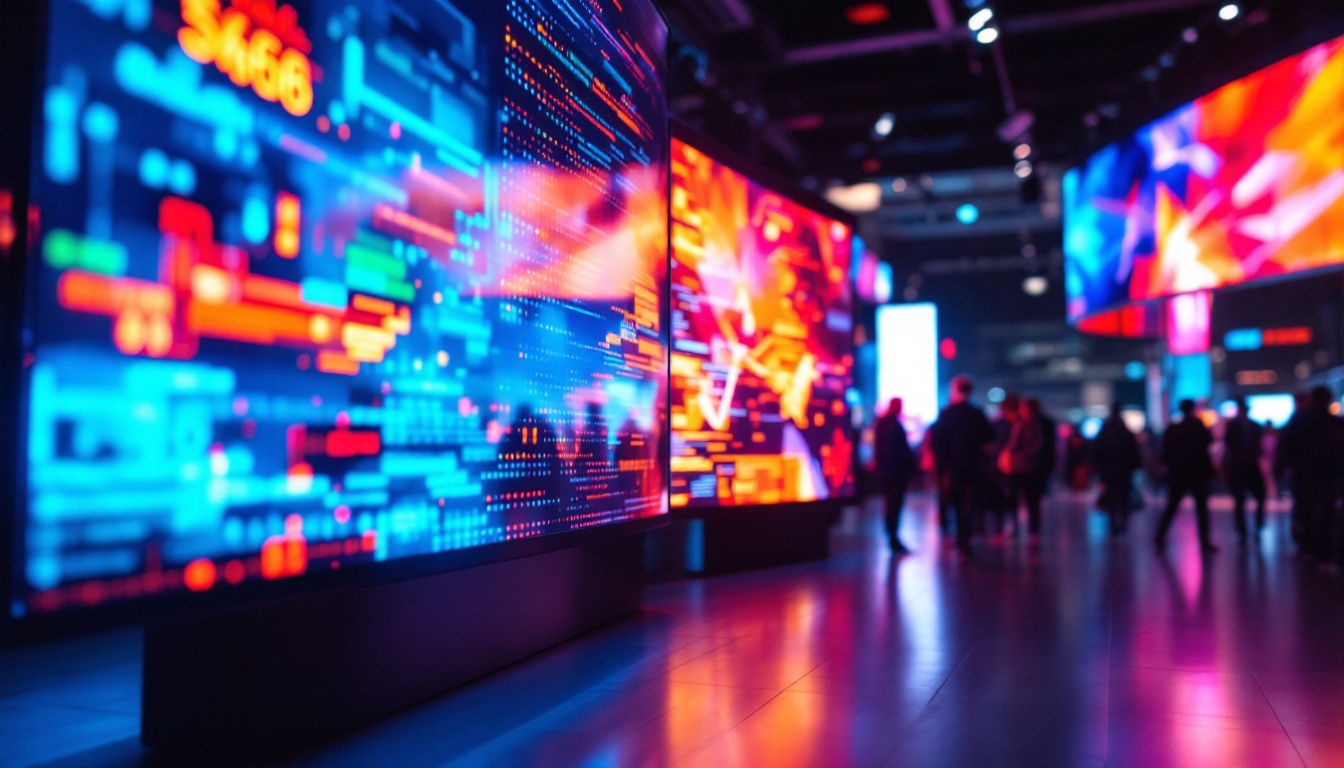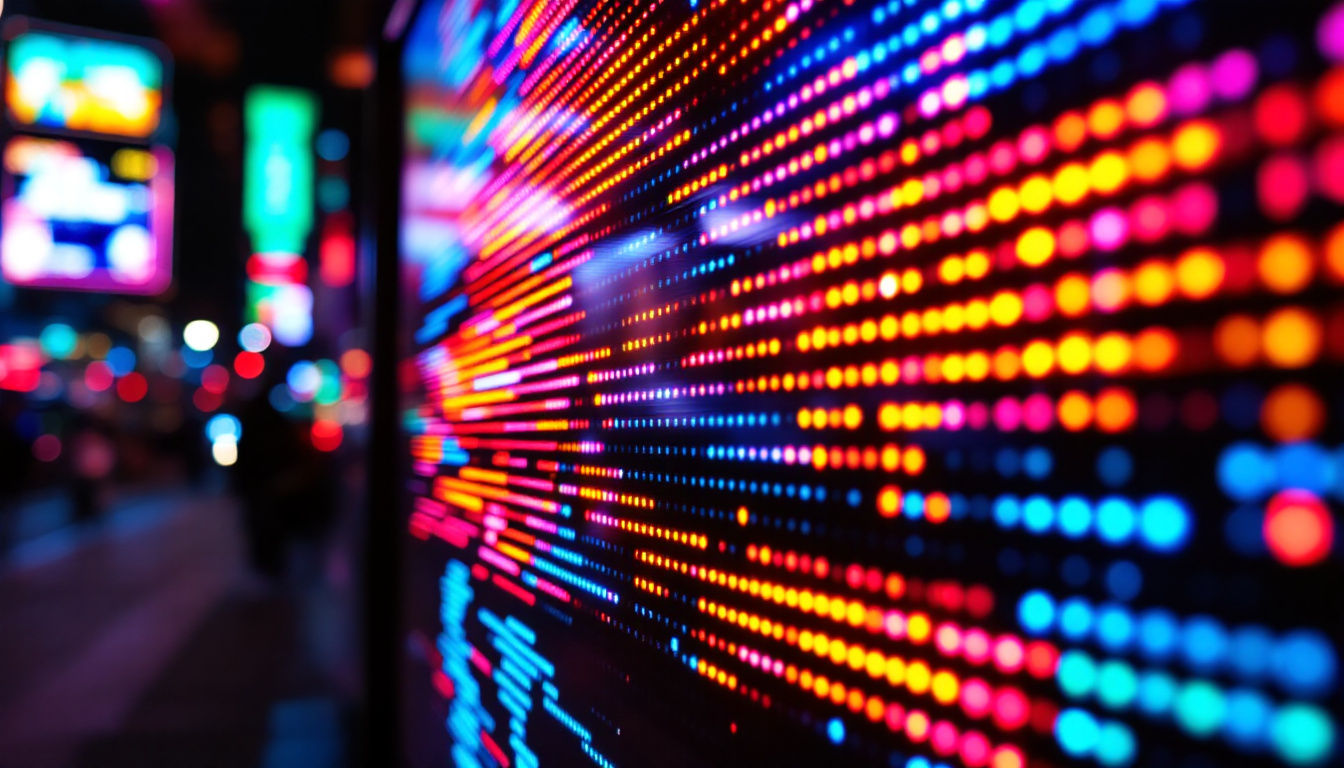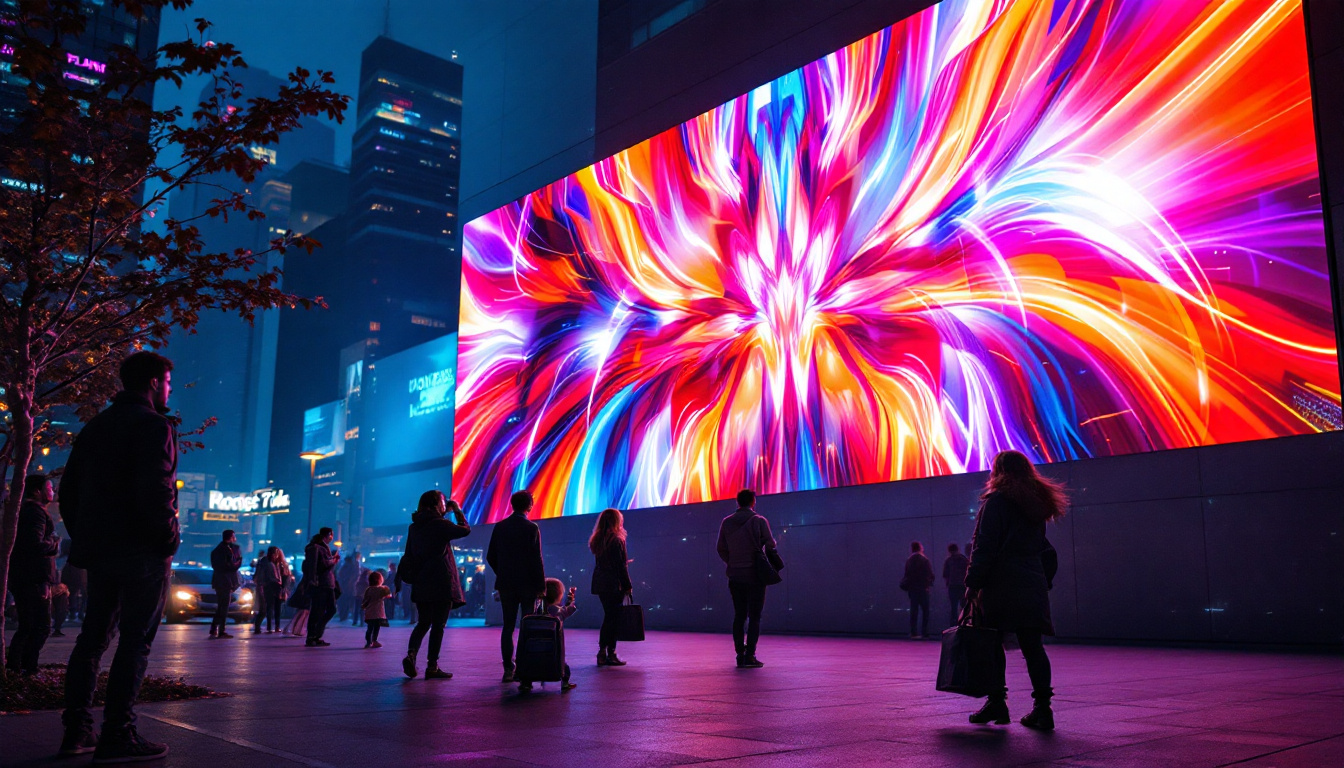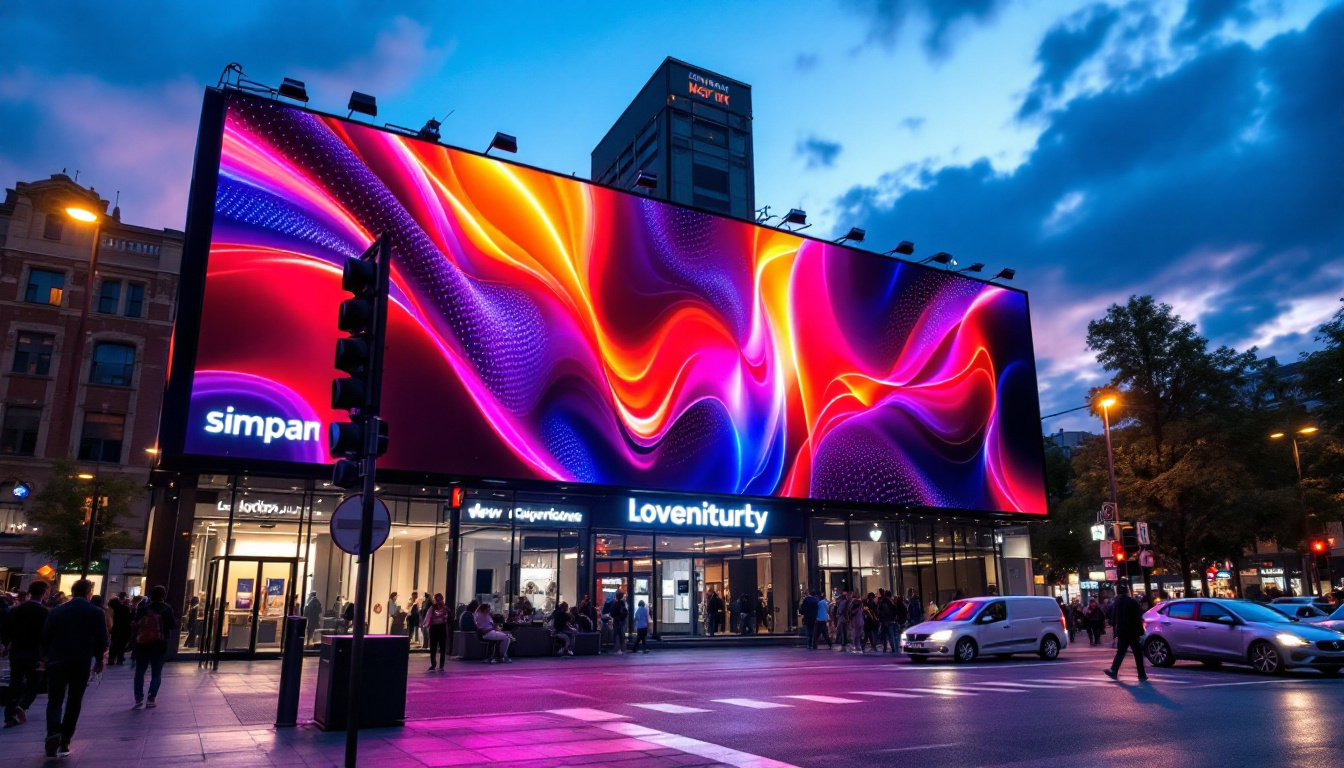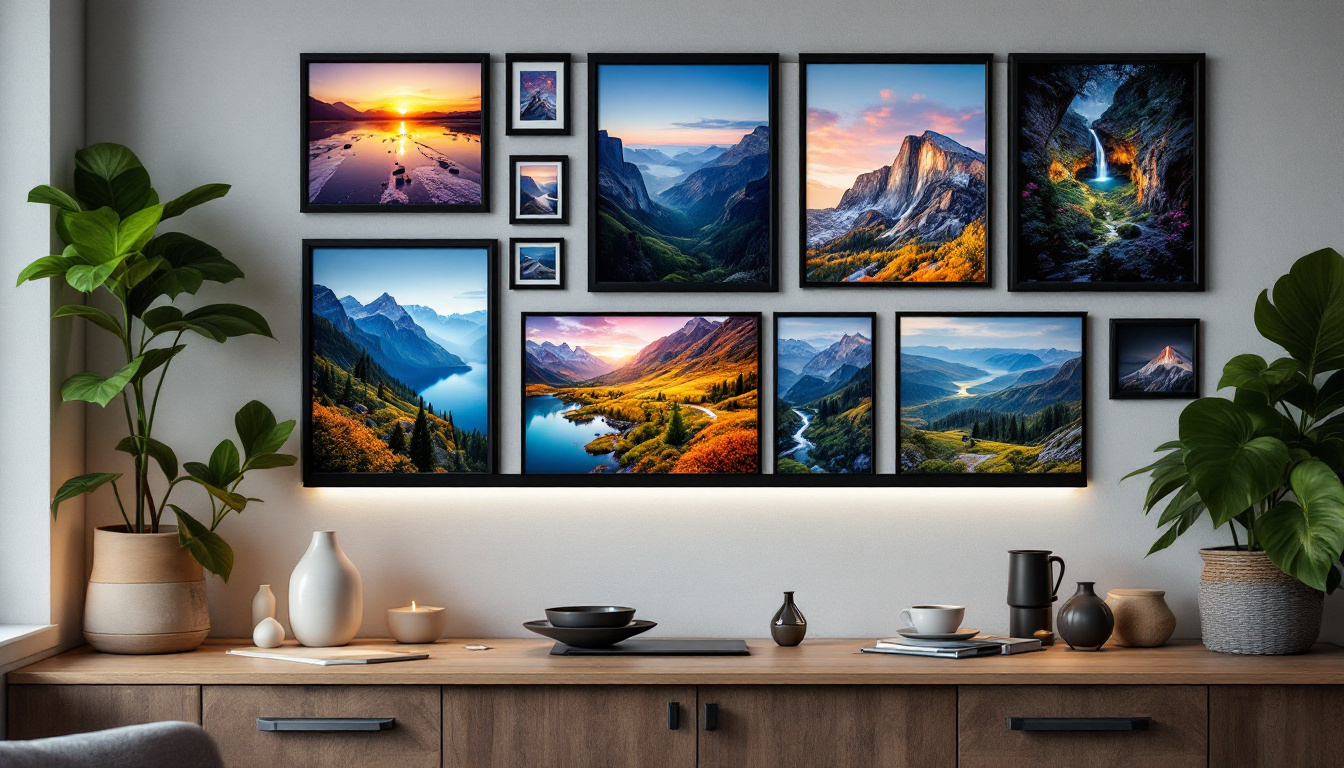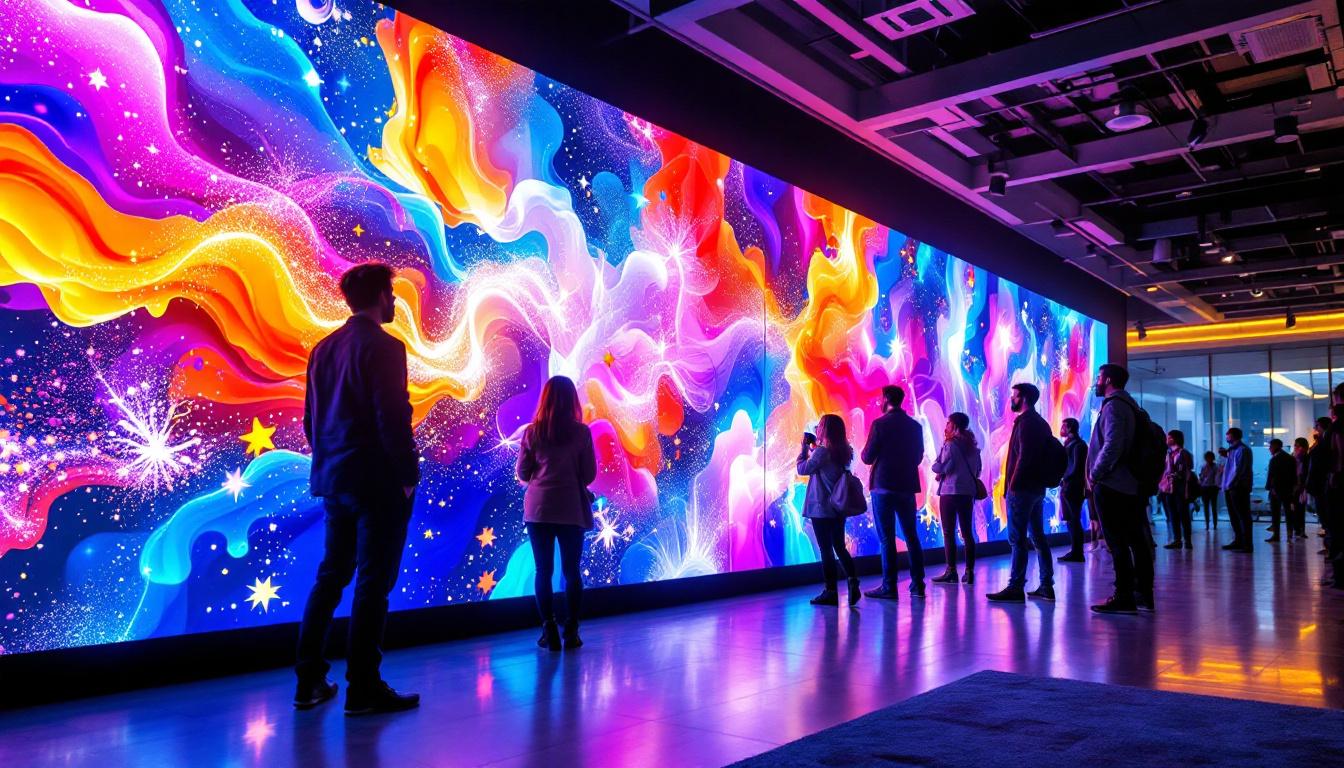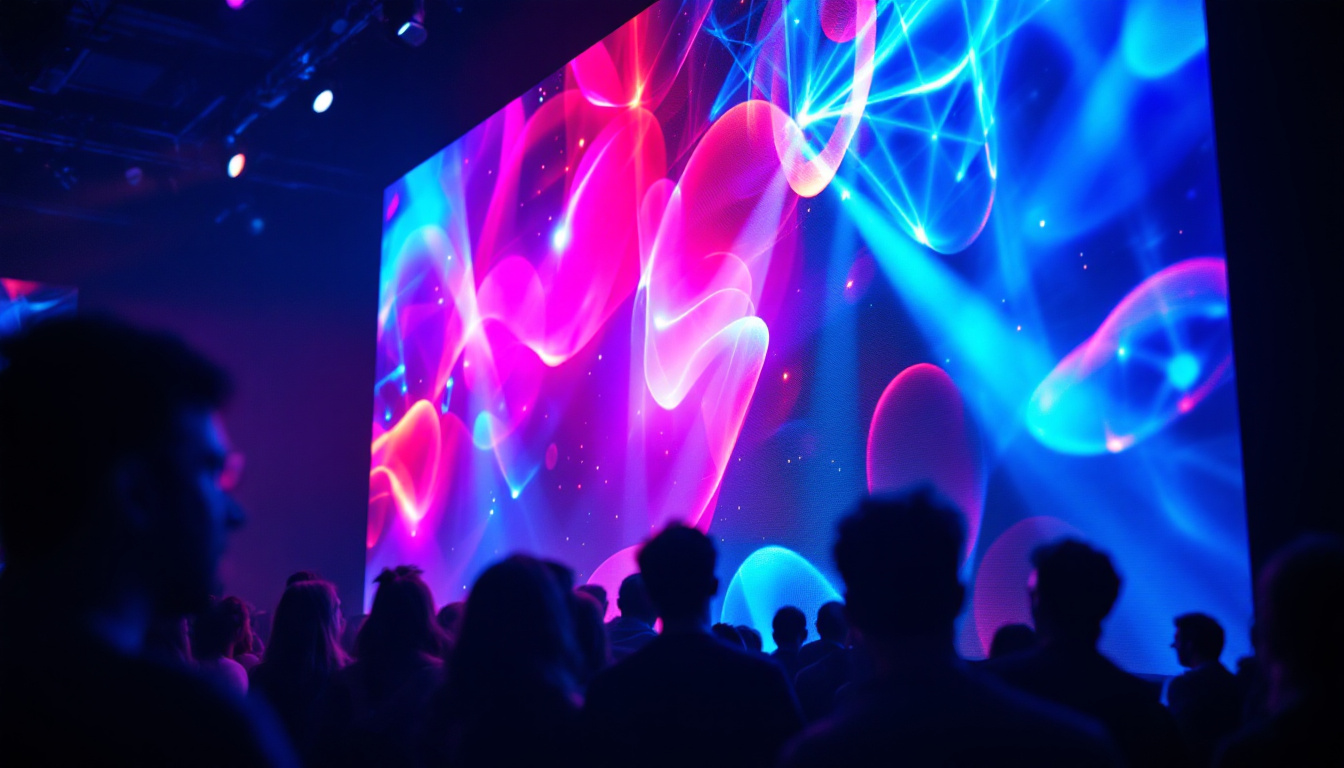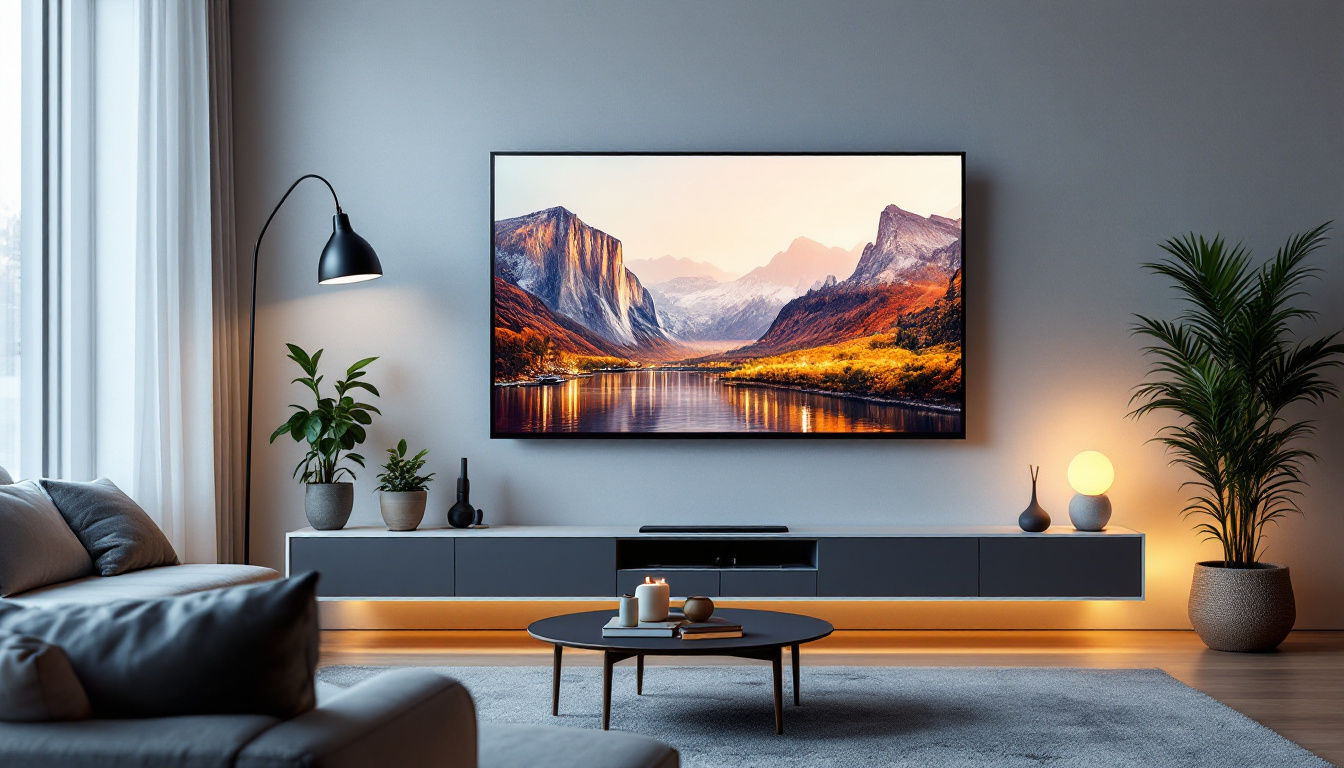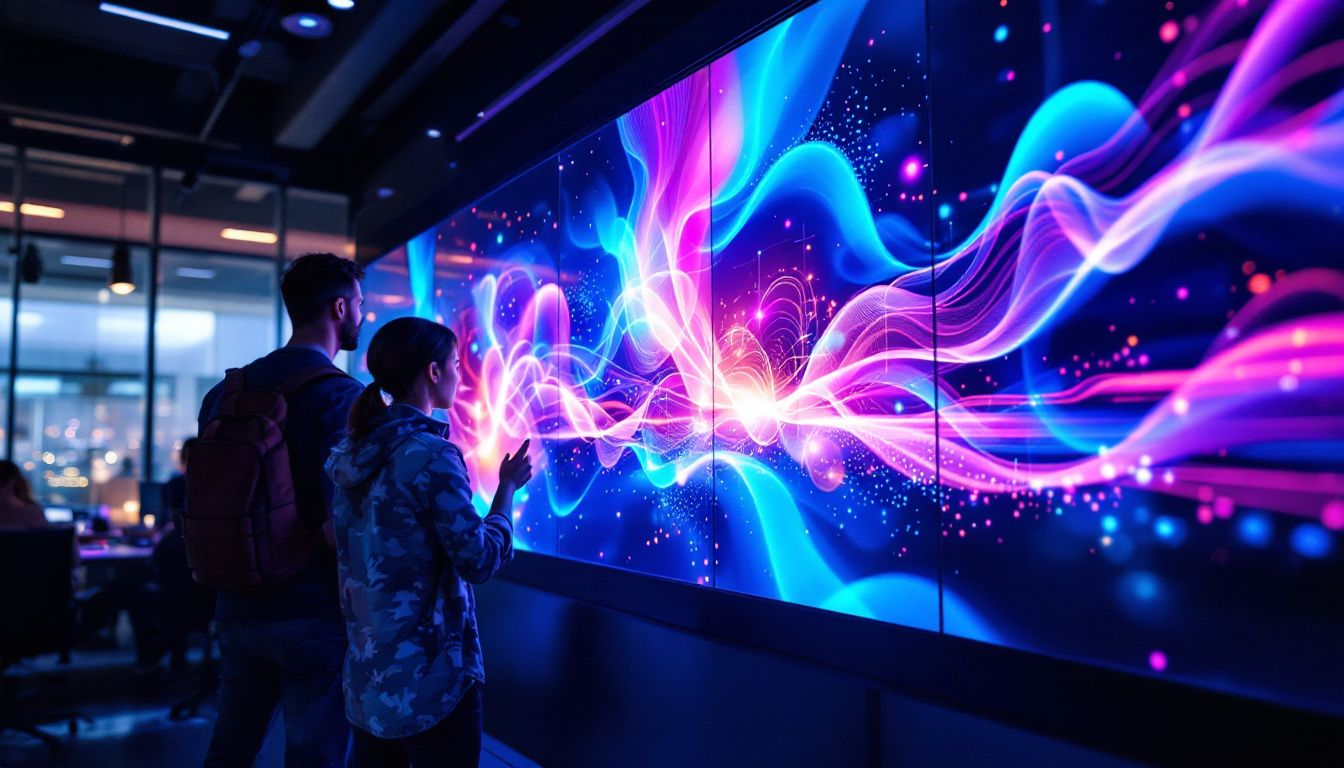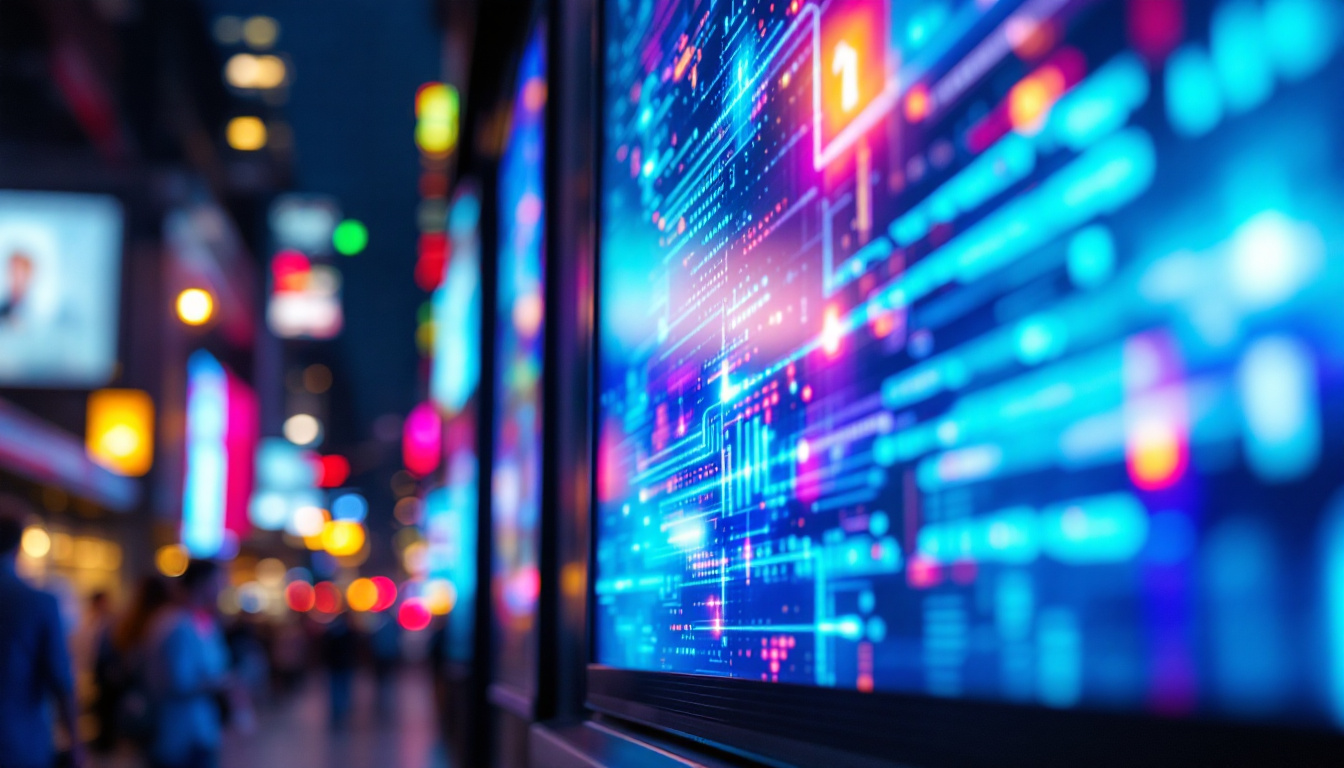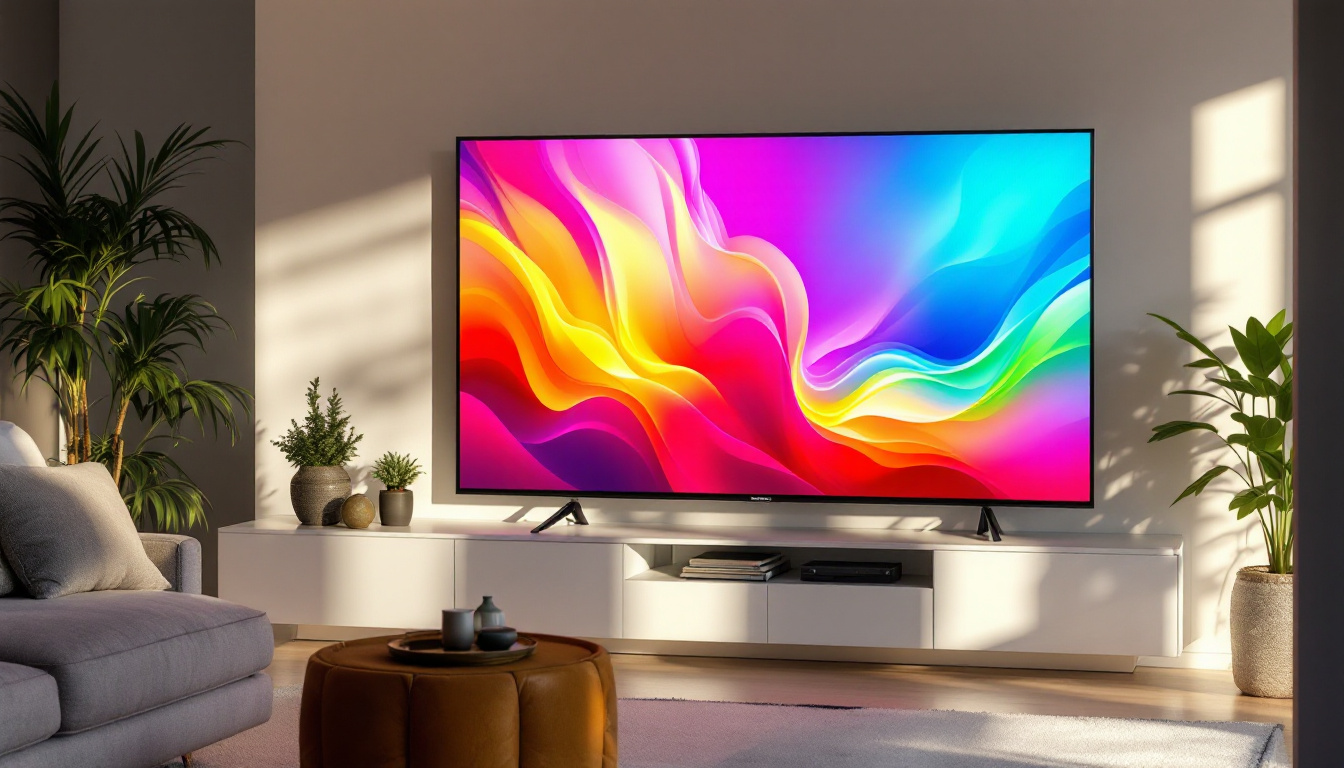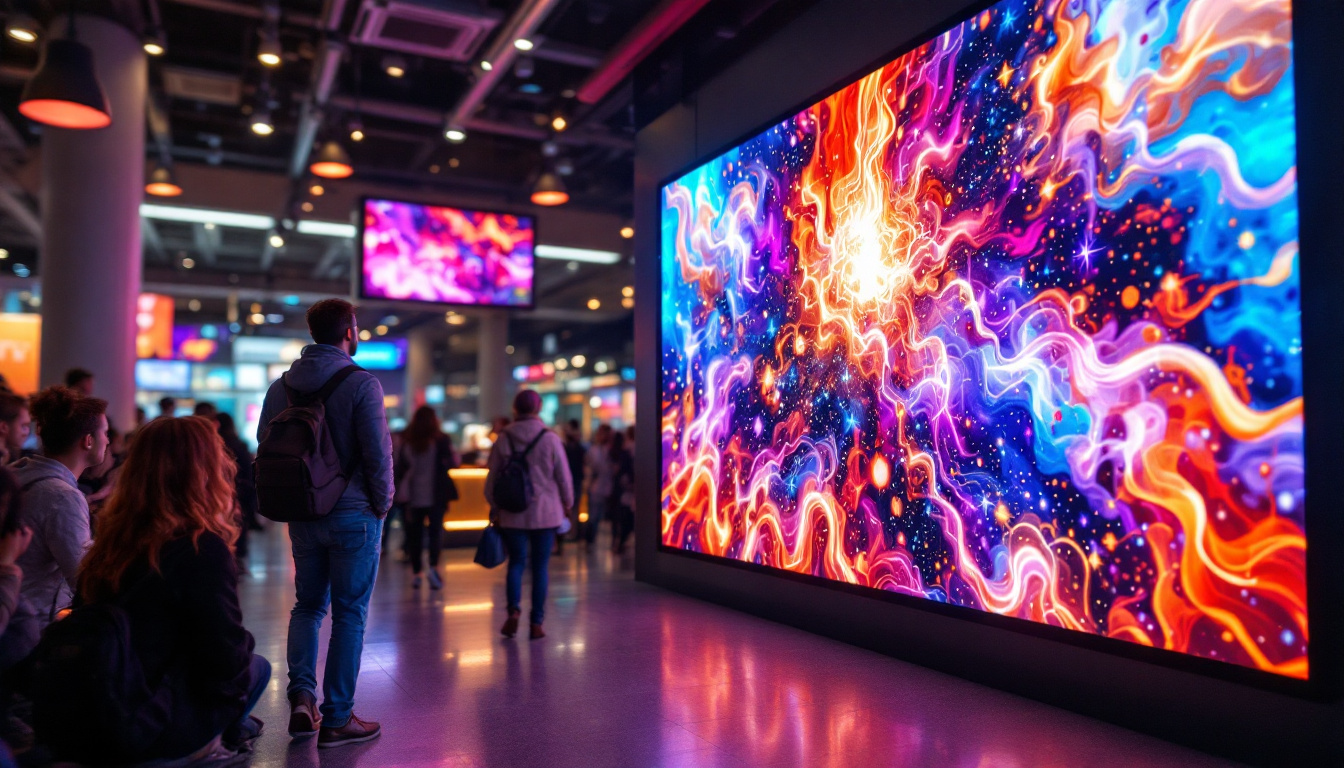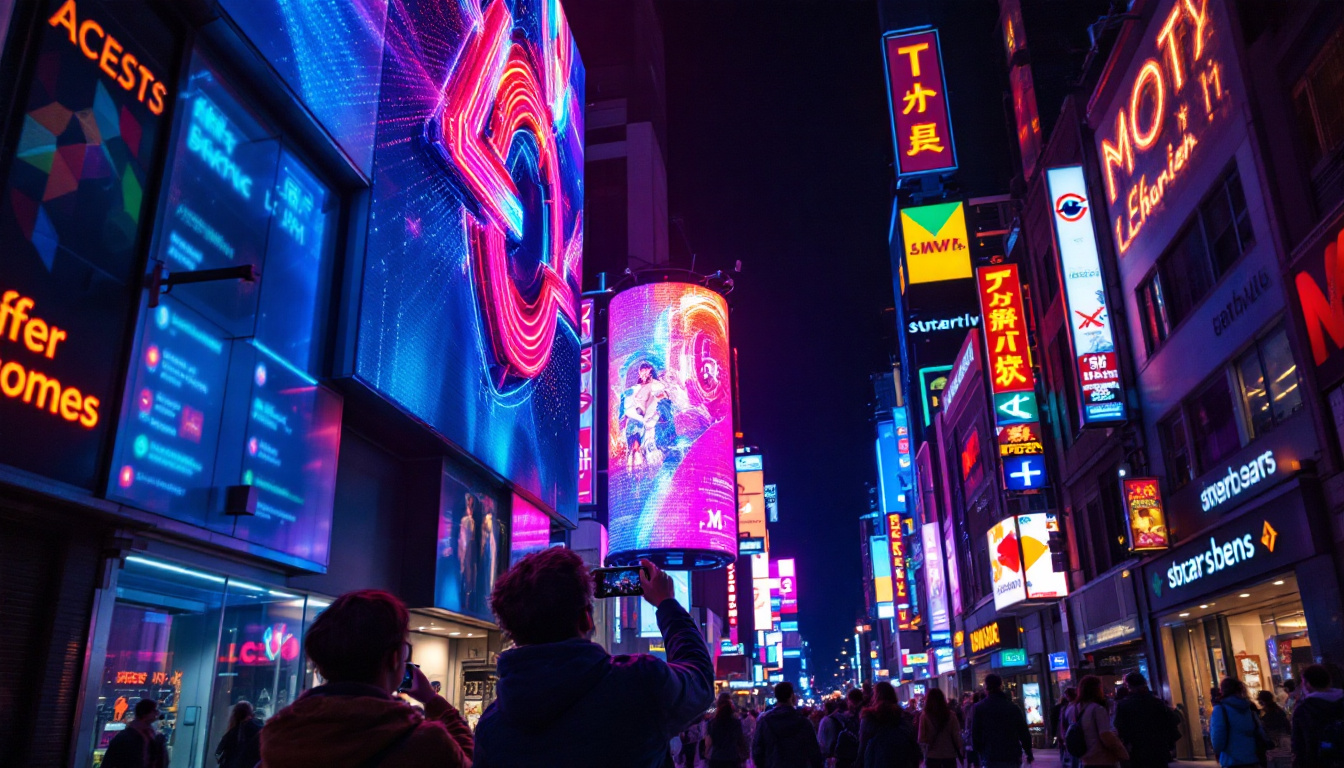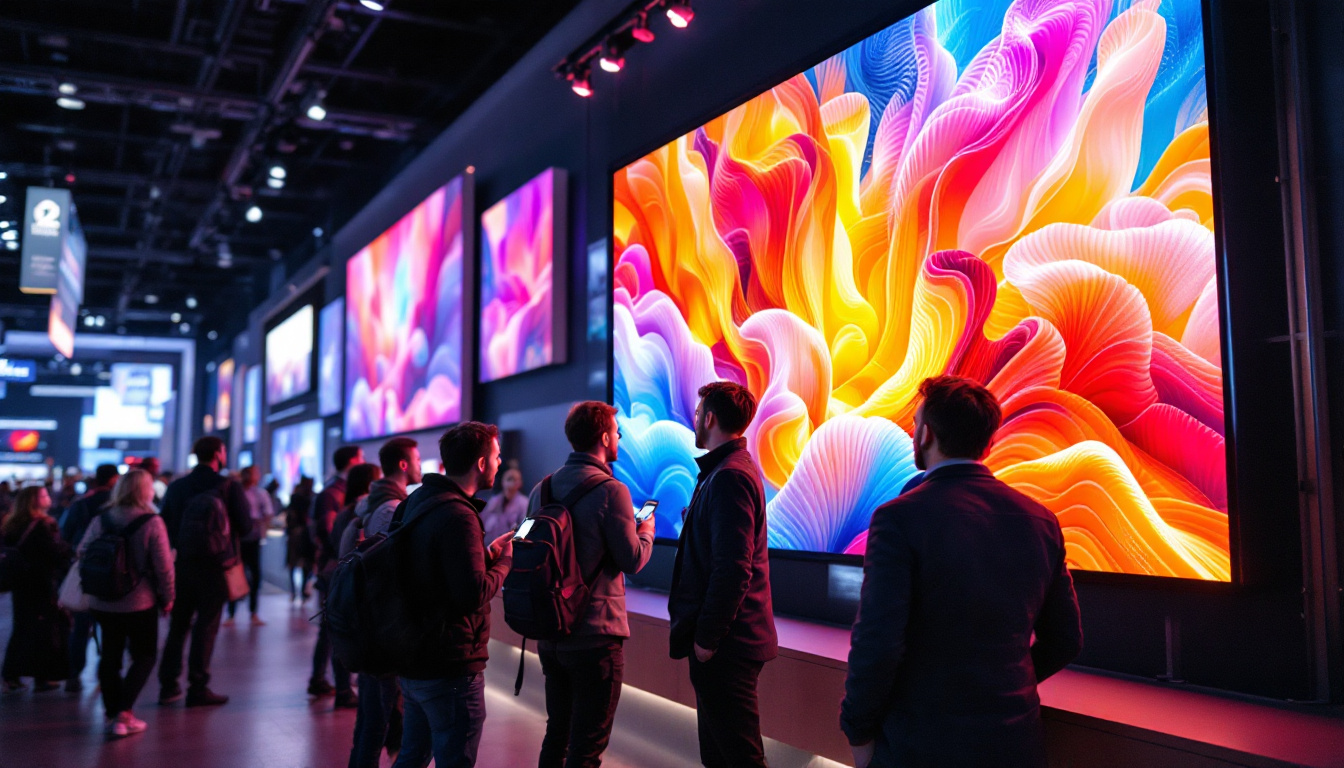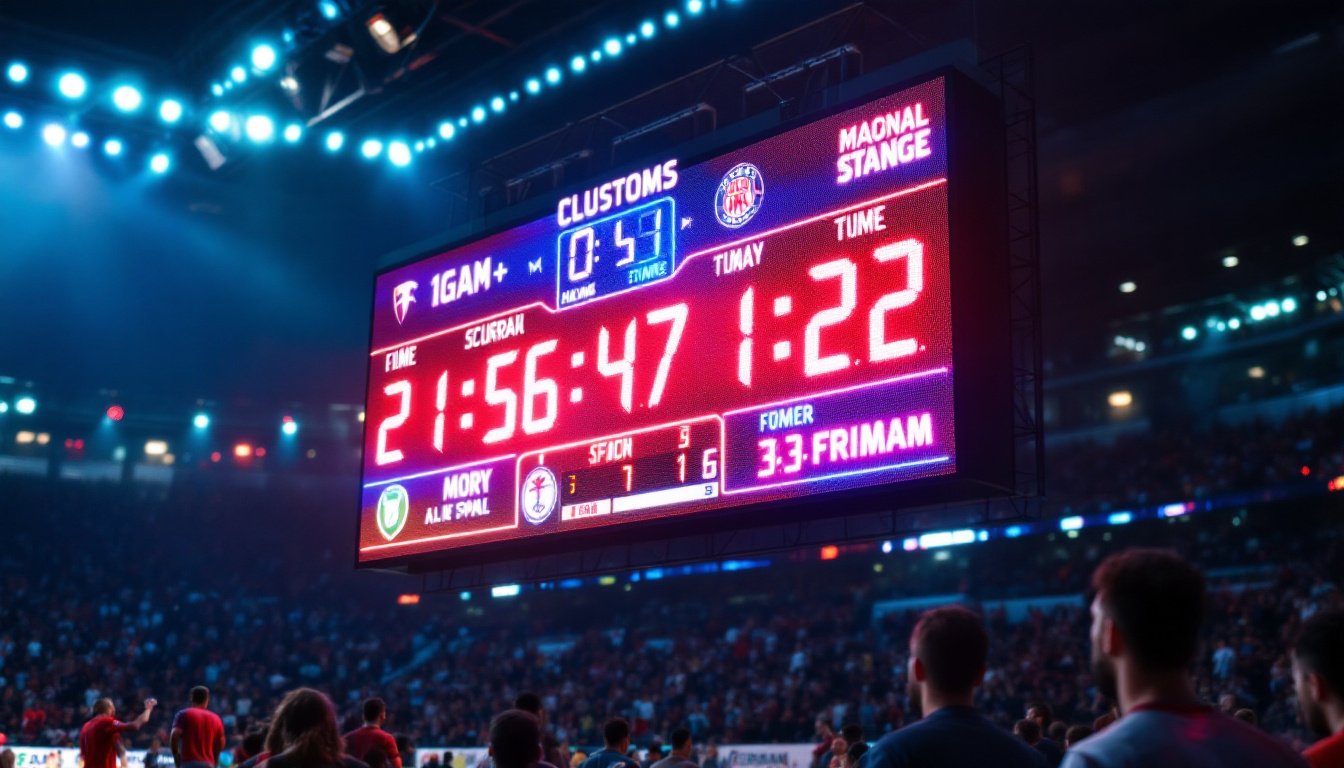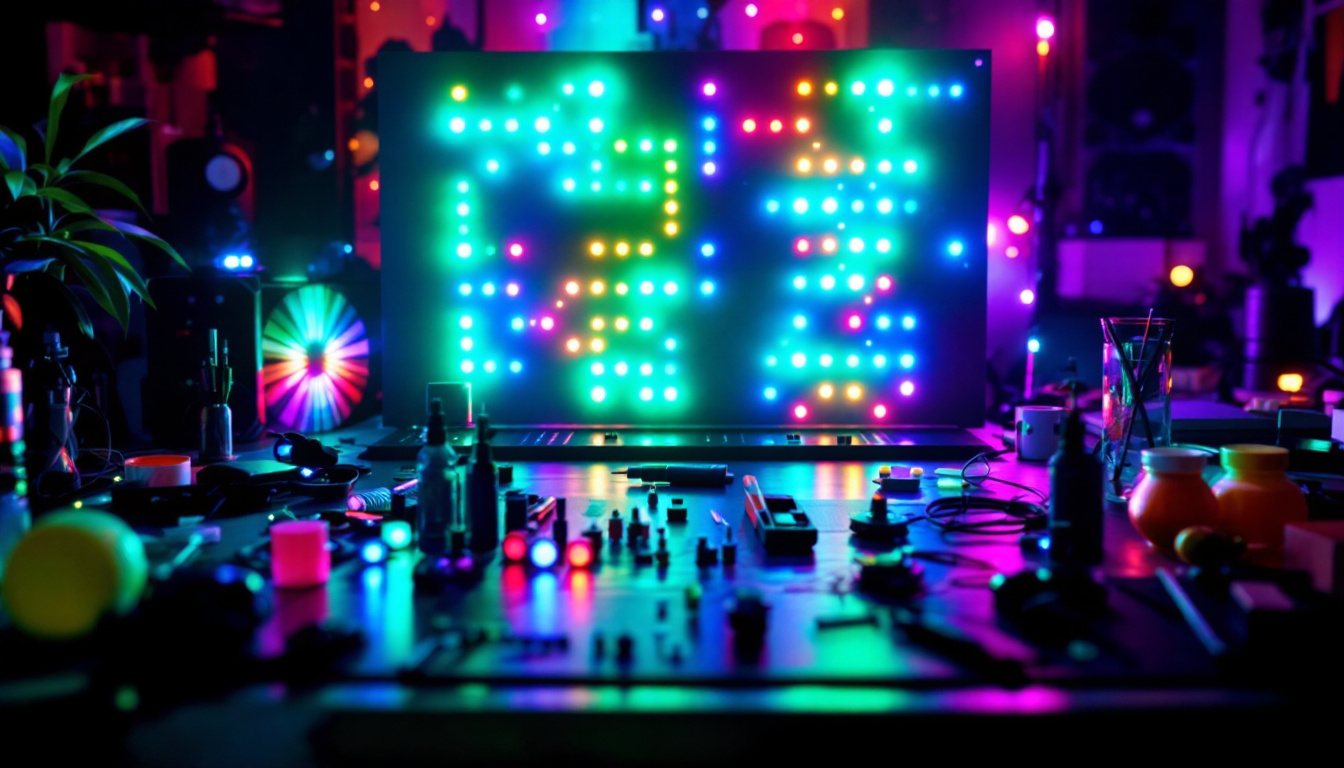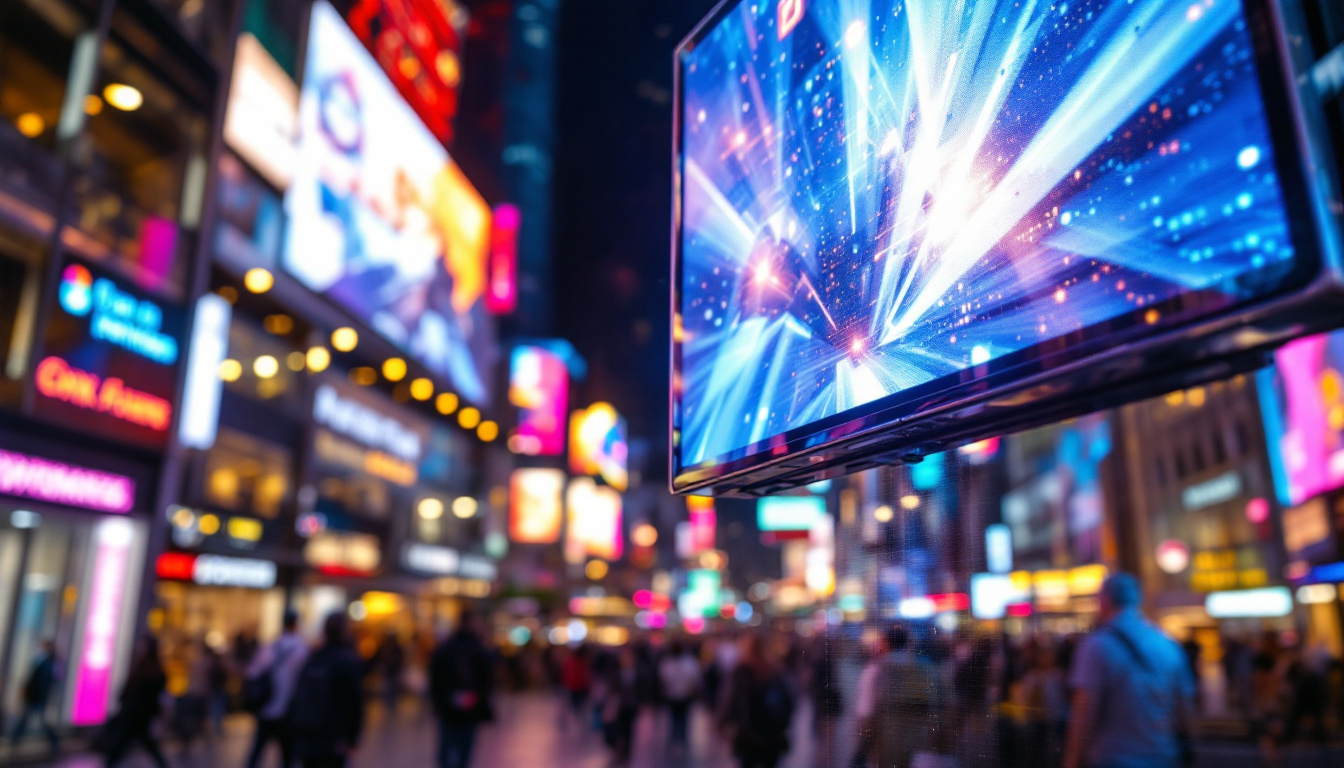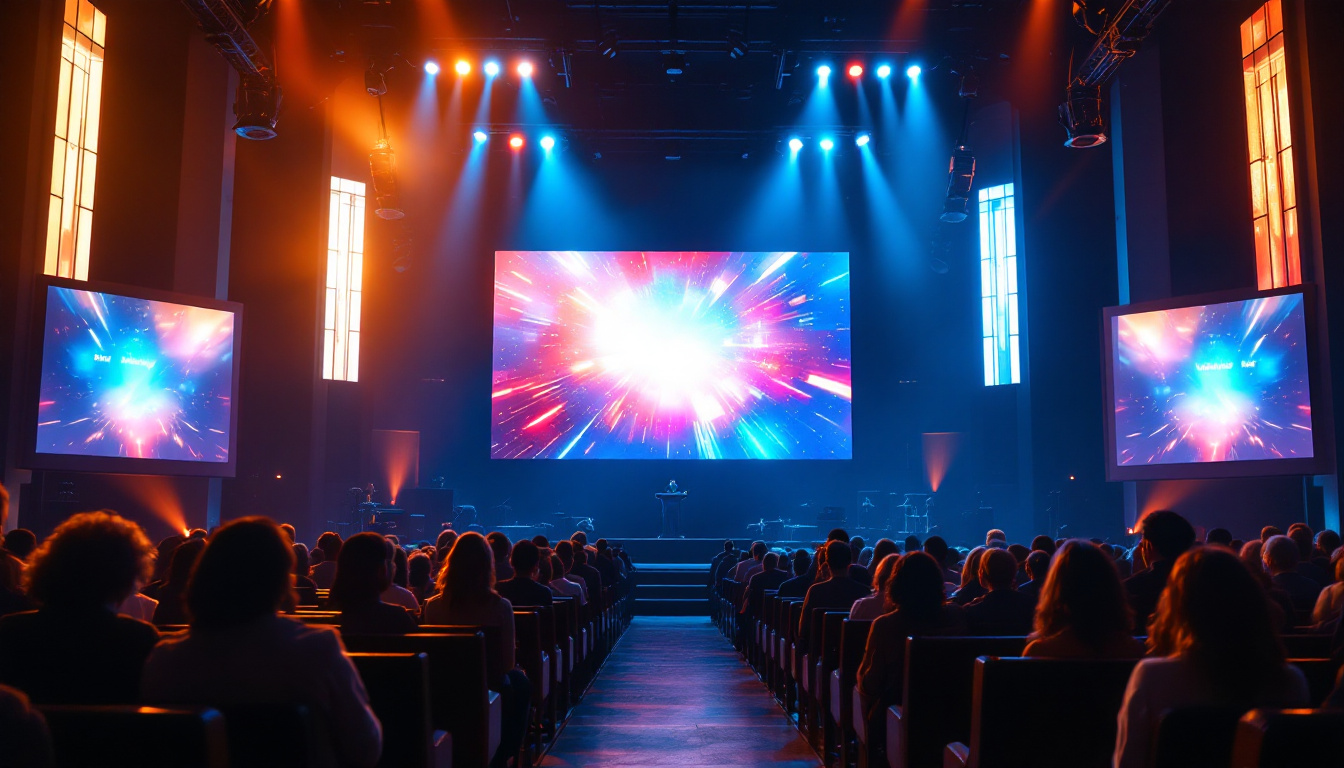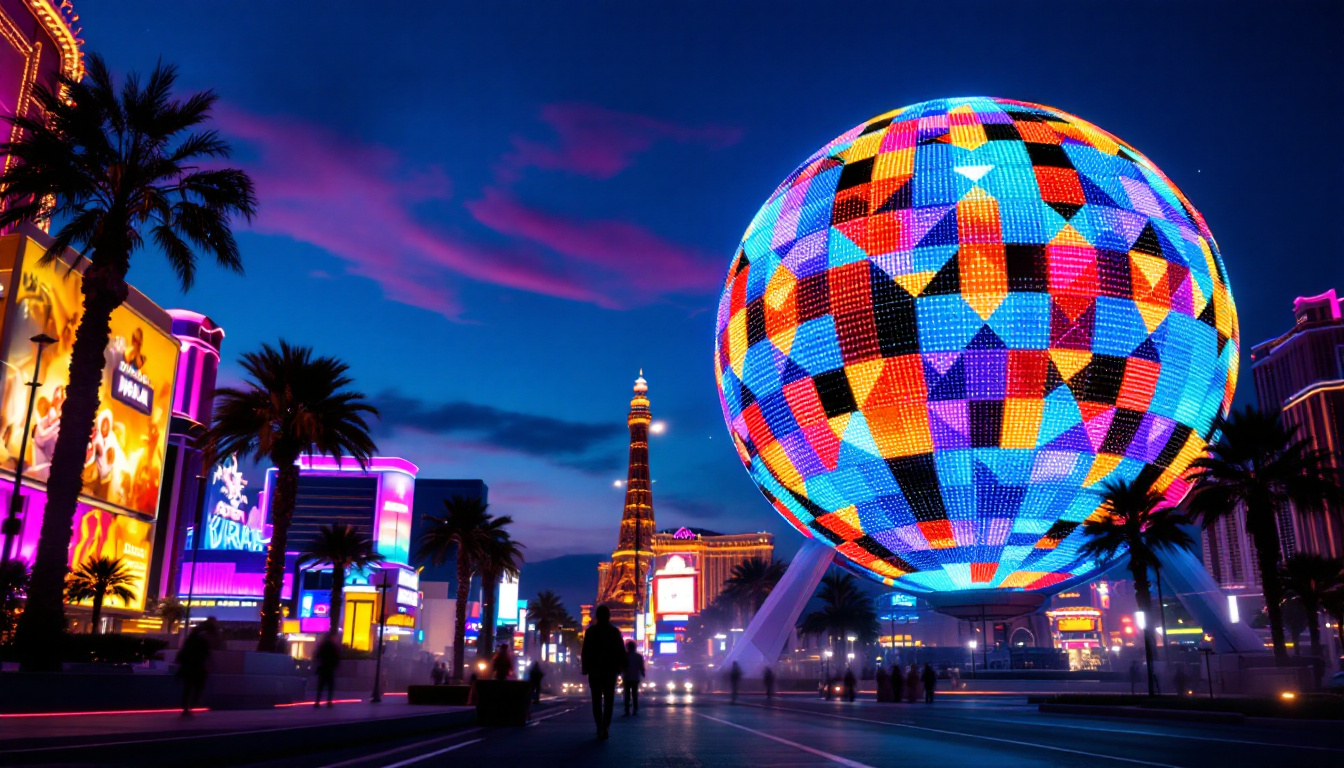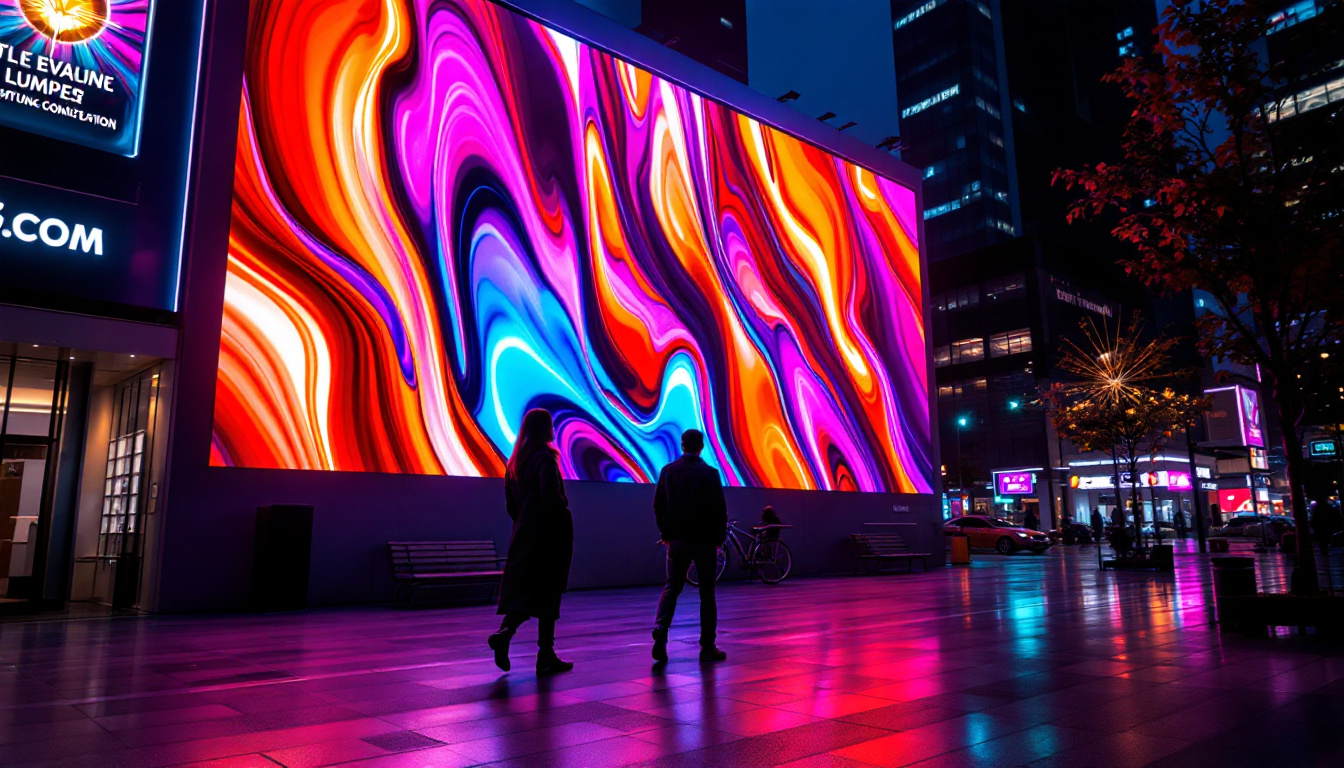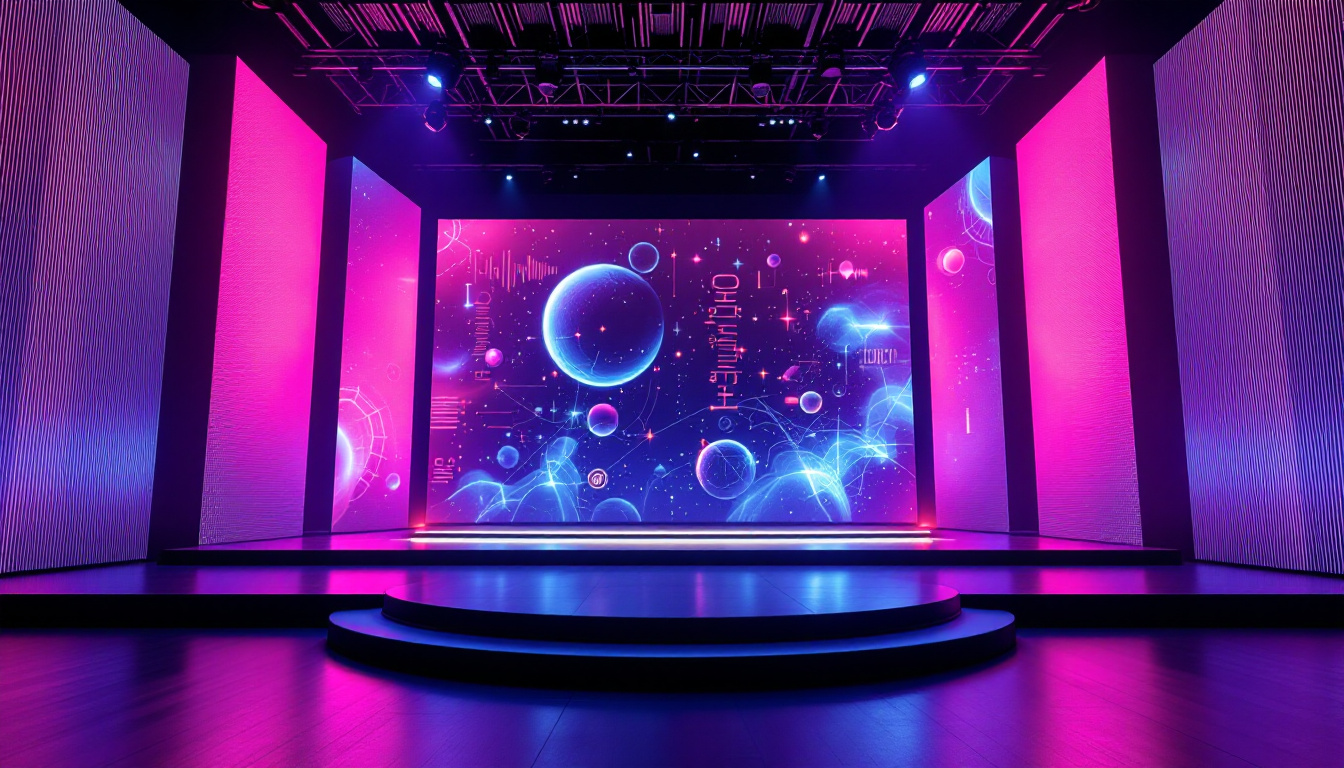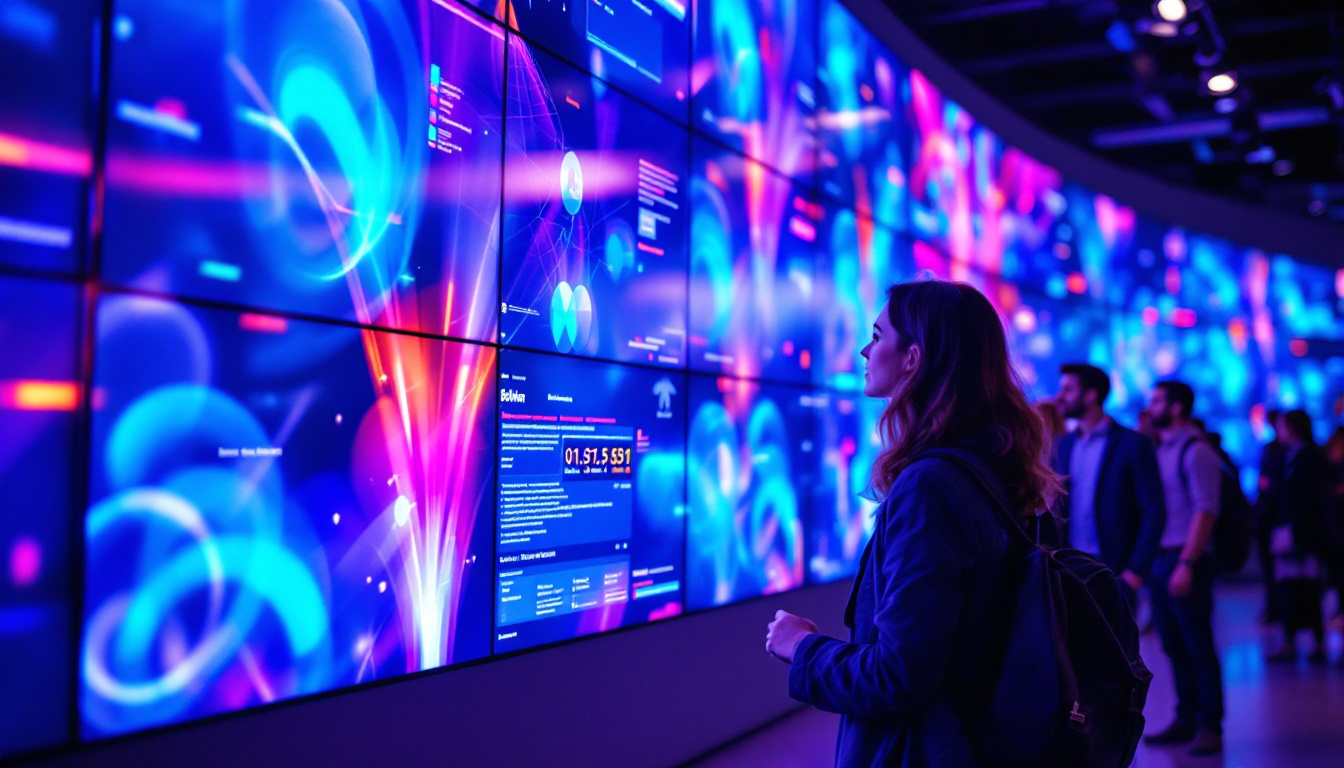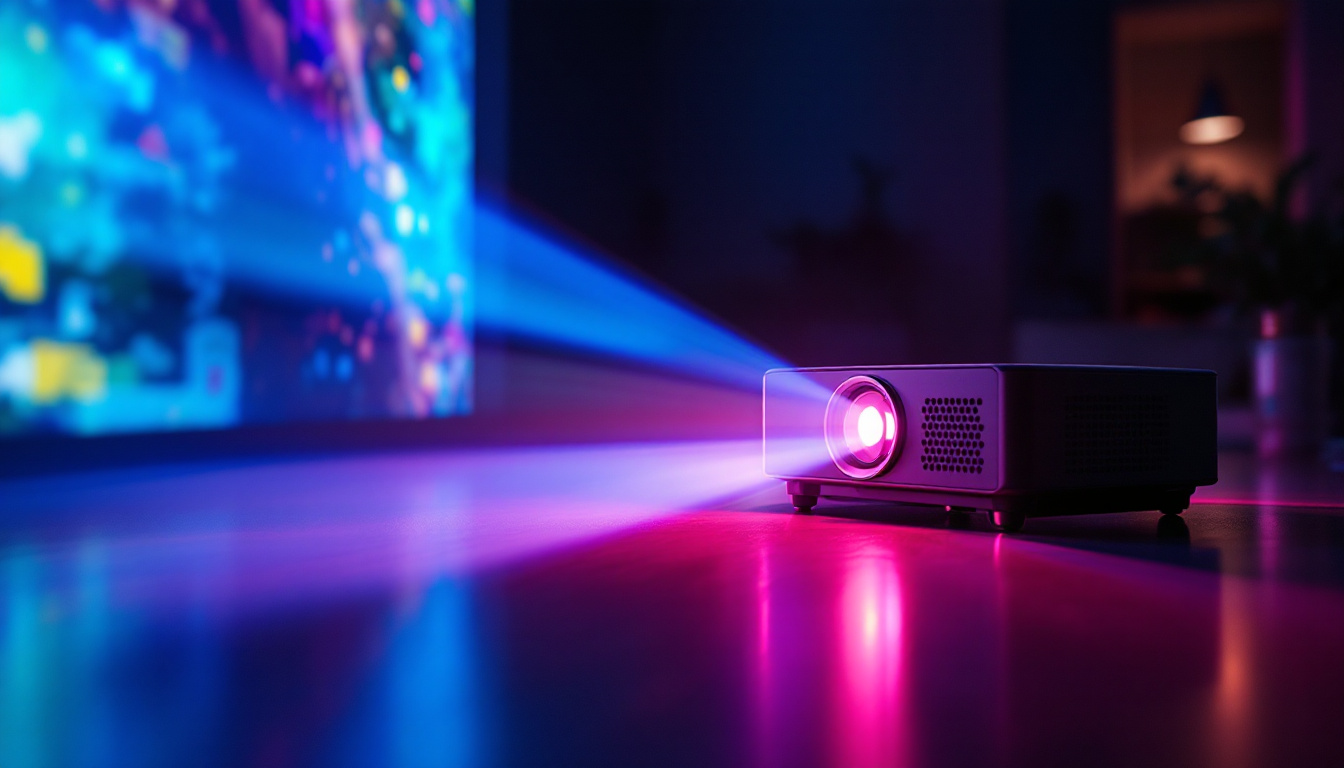In the rapidly evolving world of technology, LED displays have emerged as a dominant force in visual communication. Crystal Display Systems (CDS) plays a pivotal role in this landscape, offering innovative solutions that enhance the way information is presented. This article delves into the intricacies of LED displays, their applications, and the technology that powers them.
Understanding LED Technology
Light Emitting Diodes (LEDs) are semiconductor devices that emit light when an electric current passes through them. This technology has transformed the display industry, providing brighter, more energy-efficient options compared to traditional display methods. The rise of LEDs has not only enhanced visual experiences but has also contributed to significant energy savings, making them a popular choice in both residential and commercial applications.
How LEDs Work
At the core of LED technology is the principle of electroluminescence. When electrons move through a semiconductor material, they release energy in the form of photons, which is visible light. This process is highly efficient, allowing LEDs to produce vibrant colors and high brightness levels while consuming significantly less power. The ability to control the wavelength of light emitted by the semiconductor allows for a wide spectrum of colors, enabling creative applications in various fields, from art installations to architectural lighting.
LEDs can be combined in various configurations to create displays of different sizes and resolutions. By adjusting the intensity and color of individual LEDs, manufacturers can create stunning visual experiences that captivate audiences. Furthermore, advancements in LED technology have led to the development of smart LEDs, which can be programmed for dynamic lighting effects, enhancing the interactivity and engagement of displays in public spaces and events.
Types of LED Displays
There are several types of LED displays, each designed for specific applications. The most common types include:
- Direct View LED Displays: These are made up of individual LED modules that form a complete screen. They are ideal for outdoor advertising and large-scale installations, providing high visibility even in bright sunlight due to their exceptional brightness levels.
- LED Backlit Displays: These displays use LEDs to illuminate an LCD panel from behind, providing improved contrast and color accuracy. This technology is widely used in televisions and computer monitors, offering a thinner profile and enhanced viewing experiences.
- Organic LED (OLED) Displays: Utilizing organic compounds, OLEDs offer superior color reproduction and flexibility, making them suitable for high-end consumer electronics. Their ability to produce true blacks by turning off individual pixels has revolutionized the way we perceive image quality, especially in cinematic experiences.
In addition to these types, there are also specialized LED displays such as transparent LEDs, which allow for innovative advertising solutions without obstructing views, and flexible LED panels that can be bent into various shapes for creative installations. The versatility of LED technology continues to inspire new applications, from wearable tech to automotive lighting, showcasing its potential to reshape the future of illumination and display technologies.
Applications of LED Displays
LED displays have found their way into various sectors, revolutionizing how information is conveyed. Their versatility makes them suitable for a wide range of applications.
Advertising and Marketing
One of the most prominent uses of LED displays is in advertising. Billboards and digital signage leverage the high visibility of LED technology to capture consumer attention. The ability to change content dynamically allows businesses to tailor their messages based on time, audience, and location.
Moreover, LED displays can showcase vibrant colors and animations, making advertisements more engaging. This adaptability not only enhances brand visibility but also increases the effectiveness of marketing campaigns. With the integration of advanced technologies such as facial recognition and data analytics, advertisers can now deliver personalized content that resonates with specific demographics, further driving consumer engagement and conversion rates.
Entertainment and Events
In the entertainment industry, LED displays are ubiquitous. Concerts, sports events, and festivals utilize large LED screens to enhance the audience experience. These displays can show live feeds, graphics, and animations, creating an immersive environment.
Furthermore, LED technology is employed in stage designs and installations, allowing for creative lighting effects that complement performances. The flexibility of LED displays enables event organizers to create unique visual experiences that resonate with attendees. For instance, during live performances, LED screens can be synchronized with music, creating a multisensory experience that captivates audiences. Additionally, the advent of 3D LED displays has opened up new avenues for artistic expression, allowing for stunning visual storytelling that can transport viewers into entirely different worlds.
Transportation and Wayfinding
LED displays are increasingly used in transportation systems for real-time information dissemination. Train stations, airports, and bus terminals utilize LED screens to provide travelers with updates on schedules, delays, and other essential information.
Additionally, LED displays serve as wayfinding tools in urban environments, guiding pedestrians and drivers with clear, bright signage. Their visibility in various lighting conditions ensures that information is accessible at all times. Beyond just providing information, some modern LED displays are equipped with interactive features, allowing users to access maps and directions at their fingertips. This interactivity enhances user experience, making navigation through complex transit systems more intuitive and efficient. Moreover, as cities evolve, the integration of smart LED displays with IoT technology is paving the way for smarter urban environments, where real-time data can be utilized to improve traffic flow and enhance public safety.
The Advantages of LED Displays
LED displays offer numerous advantages over traditional display technologies, making them a preferred choice for many applications.
Energy Efficiency
One of the most significant benefits of LED displays is their energy efficiency. Compared to incandescent and fluorescent lights, LEDs consume far less power while providing superior brightness. This efficiency translates into lower operational costs, making LED displays a cost-effective solution in the long run.
Moreover, the longevity of LED technology means that displays require less frequent replacements, further reducing waste and maintenance costs. This sustainability aspect appeals to environmentally conscious consumers and businesses alike.
Brightness and Visibility
LED displays are renowned for their brightness, making them ideal for both indoor and outdoor use. The high luminosity ensures that content remains visible even in direct sunlight, a critical factor for outdoor advertising and public displays.
This capability is further enhanced by the ability to adjust brightness levels based on ambient light conditions, ensuring optimal visibility at all times. As a result, LED displays can effectively convey messages regardless of the environment.
Versatility and Customization
The versatility of LED displays is unmatched. They can be configured into various shapes and sizes, allowing for creative installations that cater to specific needs. From large stadium screens to small digital signage in retail stores, the adaptability of LED technology is a significant advantage.
Additionally, LED displays can be customized to display different types of content, including videos, animations, and static images. This flexibility allows businesses to communicate their messages effectively and engage their target audience.
Challenges in LED Display Technology
Despite their many advantages, LED displays are not without challenges. Understanding these issues is crucial for manufacturers and consumers alike.
Initial Costs
While LED displays offer long-term savings due to their energy efficiency and durability, the initial investment can be significant. High-quality LED technology often comes with a higher price tag compared to traditional display options.
This upfront cost can deter some businesses from making the switch, particularly small enterprises with limited budgets. However, as technology advances and production costs decrease, LED displays are becoming more accessible to a broader range of consumers.
Color Calibration and Quality Control
Maintaining color accuracy and consistency across LED displays can be challenging, especially in large installations where multiple screens are used. Variations in brightness and color can lead to an uneven viewing experience.
To address this issue, manufacturers must implement rigorous quality control measures and calibration processes. This ensures that all displays within a network provide a uniform visual experience, which is crucial for branding and messaging.
Future Trends in LED Display Technology
The LED display industry is poised for significant advancements as technology continues to evolve. Several trends are shaping the future of this dynamic field.
MicroLED Technology
MicroLED is an emerging technology that promises to revolutionize the display landscape. By using tiny, individual LEDs to create images, MicroLED displays offer superior resolution, contrast, and energy efficiency. This technology is particularly appealing for high-end applications, such as televisions and large-scale digital signage.
As MicroLED technology matures, it is expected to replace traditional LED displays in many applications, offering enhanced performance and flexibility.
Integration with Smart Technology
The integration of LED displays with smart technology is another trend gaining traction. Smart displays equipped with sensors and connectivity features can provide real-time data and analytics, allowing businesses to optimize their messaging and advertising strategies.
This connectivity also enables remote management and updates, making it easier for businesses to maintain their displays and ensure they are always up-to-date with the latest content.
Environmental Sustainability
As sustainability becomes a priority for consumers and businesses alike, the LED display industry is focusing on eco-friendly practices. Manufacturers are exploring ways to reduce the environmental impact of production and disposal, such as using recyclable materials and energy-efficient manufacturing processes.
This shift towards sustainability not only benefits the planet but also enhances brand reputation, as consumers increasingly favor environmentally responsible companies.
Conclusion
Crystal Display Systems has positioned itself as a leader in the LED display market, providing innovative solutions that cater to a diverse range of applications. As the technology continues to evolve, the advantages of LED displays—such as energy efficiency, brightness, and versatility—make them an attractive choice for businesses and organizations.
While challenges remain, the future of LED display technology is bright. With advancements like MicroLED, smart technology integration, and a focus on sustainability, the industry is set to thrive in the coming years. As businesses recognize the value of effective visual communication, LED displays will undoubtedly play a crucial role in shaping the future of advertising, entertainment, and information dissemination.
Explore Cutting-Edge LED Displays with LumenMatrix
Ready to elevate your visual communication with the latest in LED display technology? Discover LumenMatrix’s comprehensive range of innovative LED solutions, from dynamic Indoor and Outdoor LED Wall Displays to versatile Vehicle and Floor LED Displays. Whether you’re looking to captivate your audience with a Custom LED Display or streamline your message with an All-in-One LED Display, LumenMatrix has the tools to revolutionize your brand’s presence. Experience the future of digital signage and create unforgettable visual experiences. Check out LumenMatrix LED Display Solutions today and transform the way you engage with your audience.

